Scott Hamilton – 9 October, 2018
What connection is there between landlocked, frigid Tibet and the balmy islands of Tonga? But a sinister parallel between Tibet and Tonga soon comes to mind. Both are dominated by China, the twenty-first century's ascendant imperial power. Tonga, which was the only indigenous Pacific society to avoid colonisation in the nineteenth and twentieth centuries, is terminally indebted to China. It is becoming, Ezekiel seems to be saying, a Tibet with coconut palms.
Nuku’alofa’s American wharf is coral and cement. It was built to help dock the fleetload of palangi soldiers who suddenly arrived on Tongatapu in 1942. The Americans established bases, airfields, bars, and cinemas across the island, before leaving suddenly less than three years later, when the war had shifted north, and Tonga had become irrelevant.
Before they waved goodbye, the occupiers pushed hundreds of trucks, tractors, and jeeps off the wharf they had made, into the warm shallow water where kids liked to dive. All that gear was too heavy and expensive to ship home, and too sophisticated, the Americans patronisingly thought, for Tongans, who still relied on horses when they travelled between villages and ploughed their fields. Today dripping children sometimes bring up relics of the occupation — hubcaps, spanners, cans of bully beef salted by a tropical sea — from the mud of Nuku’alofa harbour.
The American wharf is closed to ships, but open to people. For locals and visitors alike, it is a good place to socialise, and to size up Nuku’alofa’s capital. Young Tongan couples court on the wharf, away from the eyes and ears of parents and aunts; tourists photograph sunsets, and also the half-sunken hulls of Nuku’alofa harbour’s numerous wrecked ships, which they sometimes mistake for whales.
When I stood on the American wharf recently I noticed three new buildings rising through the coconut palms and spires of Nuku’alofa’s skyline. East of the wharf, on the edge of the city, a new port was being constructed, with the help of Chinese money and engineers. The port’s terminal was a glass rectangle tilting gracefully upwards. White watchtowers had grown around its edges.
Opposite the American wharf, two massive buildings glared at each other from either sides of a road. Both were surrounded by metal fences with peaks that looked sharp enough to stick a head on. The fences were punctuated by gates and guardhouses. According to Tongan construction workers who have been allowed through those gates, each of the buildings will eventually extend for three stories into the earth, as well as four stories above it.
Chinese diplomats say that the new buildings opposite the American wharf will be the site of an embassy; observers like the veteran Pacific journalist Michael Field and the Tongan-based sociologist Michael Horowitz fear that they might soon house a spy base, or some other covert military facility. In a recent article for a Japanese newspaper, Field noted the surreal details the Chinese are giving the buildings — they will be, for example, the only structures in Tonga with snow-proof roofs — and pointed out that they are far larger than they need to be, if they are intended only as homes and offices for a team of diplomats.
To the west of the American wharf, on the corner of Nuku’alofa’s main road, a huge and ugly building called St George Palace houses a slew of government ministries. With its bright red roof, the palace’s tower resembles a dunce’s hat. The building boasts marble floors, but its air-conditioning system is reputed to fail daily. St George Palace cost the equivalent of forty-two million New Zealand dollars. All of the money was borrowed from Beijing.
Last year Tonga’s Prime Minister startled a press conference by predicting glumly that ‘China will take over the running’ of Tonga ‘in a few years’ time’. A couple of months ago, while he was preparing for the Pacific Islands Forum, ‘Akilisi Pohiva repeated his message, and suggested that the new port his predecessor had paid for with borrowed money might eventually be seized by China, in lieu of interest payments. Pohiva urged other Pacific leaders to help him argue for debt forgiveness; after a phone call from Beijing, though, he hurriedly withdrew his appeal, and issued a press release in which he said that his nation ‘attaches great importance to its relations with China’.
Even when I left Nuku’alofa for the bush districts of Tongatapu, I kept finding reminders of Chinese power. Signboards and plaques announced that Chinese generosity had paid for roads and health clinics and generators. I thought of John Cranna’s dystopian novel Arena, in which a South Pacific society is been occupied by a powerful but nebulous force that claims humanitarian motives. ‘A guest always takes care of his host’, a slogan in the novel insists.
In a small village in Tongatapu’s Hihifo, or Western, district, I walked into a store, and discovered, alongside the expected soft drinks and packets of cheezles and cans of corned beef, a display of gold rings and gold necklaces on a shelf protected by a steel grill. ‘It’s the Chinese shopkeepers’ a young local told me later, at a kava circle. ‘They extended loans to villagers, with jewellery as collateral, and they took the gold when the loans weren’t paid back.’
Chinese merchants have controlled Tonga’s retail trade for much of this century. Tongan entrepreneurs often feel obliged by their culture to offer discounts and gifts to members of their extended families, and to give away much of the money that enters their tills; immigrant Chinese shopkeepers, by contrast, are usually able to save revenue and accumulate capital. Many Tongans believe that Beijing has assisted its merchants, by organising bulk imports of goods and extending them low-interest loans.
I asked the young Hihifonian what he thought about the fact that his relatives’ treasures were sitting on a shelf in the village store. ‘What will they do next?’ he asked me angrily. ‘Will they take the koula nifo out of our mouths?’ Koula nifo, or gold teeth, are popular in Tonga, as fashion statements as well as declarations of prosperity. I imagined a pile of tiny gold nuggets, on a shelf in the village store, and a bloody pair of pliers on a lower, hidden shelf.
‘But I’m not worried’ the young man added, in an even voice. ‘We’ll take it all back, when the time comes.’ His words reminded me of the revolutionary years between 2003 and 2006, when tens of thousands of Tongans used marches, a protest village, and an epic strike to protest against their royal family’s near-absolute rule, and against Tonga’s losses of sovereignty to China.
On November the 16th, 2006 a march through Nuku’alofa turned into a riot. Chinese stores were looted, then burned. Six arsonists were killed by their own fires, as flames ate a quarter of the downtown district. After the riot a plane arrived from Beijing, and evacuated hundreds of Chinese merchants. But China soon regained its influence over Tonga, by extending the kingdom immense loans to pay for the rebuild of its capital. St George Palace is the most spectacular artefact of the rebuild.
Sinophobic violence persists on Tongatapu. Last February two Chinese farmers were found with slashed throats in a tract of bush near the western village of Lakepa; a month later teenagers attacked a Chinese shopkeeper in Lapaha, the ancient capital of the Tongan Empire. They beat the elderly woman with a rock.
When I walked the American wharf, I noticed a piece of graffiti. It had been left on a loose piece of cement that seemed to point towards the huge new Chinese embassy. ‘Free Tibet’, the graffito said, above a familiar and exhilarating name: ‘Ezekiel’.
In the years of revolutionary turmoil, Ezekiel left slogans like ‘Democracy not Hypocrisy’ and ‘The Nu Face of Youth Rebellion’ on the walls of Nuku’alofa. His phrases blended with the chants of marchers and striking workers.
Ezekiel was the nom de plume of Tevita Latu, a young man from the Nuku’alofa suburb of Havelu who had studied art in Australia before returning to his homeland early this century. Latu was painting on paper and board and canvas, as well as on walls, and November the 16th, 2006 he was due to open his first exhibition, at a space in central Nuku’alofa. He ended up rescuing paintings he had only just hung, as flames spread through the city.
Before he was a part of Tonga’s struggle for freedom, Ezekiel was an Old Testament prophet who talked compulsively about the coming destruction of Jerusalem. In retrospect, some of the slogans of the Tongan Ezekiel seem like warnings of the apocalypse that befell Nuku’alofa, a city created in the 1830s as a haven for Tongatapu’s Christians, a tropical Wesleyan Jerusalem.
After the riot, Ezekiel’s name was seen less regularly in Nuku’alofa. Latu was busy founding the Seleka Club, an institution that mixed kava drinking and art. The Chinese workmen rebuilding the capital painted over graffiti that recalled its fractious past. By the time I arrived in Tonga for the first time in 2010, Ezekiel’s daubings were as rare and fragile as Tongan’s ancient petroglyphs. Wandering Tongatapu with a camera, I eventually found a handful of specimens. One had survived beneath the verandah of a tourist resort; another clung to the wall of a gutted store; a third adorned the body of a car that lay stalled in the mud of Nuku’alofa’s lagoon.
A couple of Latu’s early works have found a sort of refuge. In 2005 Latu taught at ‘Atenisi, the small and impoverished university that polymath and Grecophile Futa Helu had established in the 1960s. Helu was an authority on Tongan as well as European art, music, and literature, but his tastes were classicist: he valued the symmetry and harmony of the Parthenon and High Renaissance art over the fragments and montages of modernism and postmodernism. Latu, by contrast, was excited by the experiments of the Cubists, and by the exquisite chaos of Basquiat’s graffiti and canvases.
Futa Helu gave Latu the task of decorating ‘Atenisi’s block of art studios: they were soon covered in murals. Working with chalk and crayon as well as paint, Latu showed a series of hybrid creatures, humanimals with melting heads and protruding spines, lurching into and recoiling from each other. Paper darts and missiles cruised through polluted air, and tropical fruits rotted on branches of barbed wire.
The murals’ language was as unstable as their imagery: scrawled Tongan curses segued into enigmatic English phrases like ‘An Artist Shall Not Kill Another Artist’. ‘It would be fair to say that Futa Helu didn’t really understand what Tevita Latu was getting at in those murals’ Paul Janman, the maker of Tongan Ark, an acclaimed feature film about ‘Atenisi, told me earlier this year. ‘Futa loved to dialogue, to talanoa. It was his pedagogical method, and his own way of learning. He was probably disappointed, because Tevita was reluctant to debate with him, over ‘Atenisi’s kava bowl. But perhaps Tevita’s paintings were a response to Futa.’
When I went to see the art block in 2013, it had been abandoned for years. I found vines and epiphytes traversing walls and windows, so that the building resembled a Mayan temple reclaimed by jungle. Drunks and meth heads had colonised the interior. The glass of their bottles crunched under my feet like cockroaches; the fires of their P pipes had splotched on the torsos and flippers and horns of Latu’s hybrid creatures.
‘Atenisi recently opened a renovated building that includes a reorganised library, some of the papers of Futa Helu, and a series of artefacts from the institution’s history. Lorenz Gonschor, a brilliant young scholar of Pacific history and lately a lecturer at ‘Atenisi, gave me a tour of the library’s second floor, where these artefacts are being kept. Gonschor showed me an extra-large wooden chair, built to accommodate the extra-large buttocks of King Tupou IV when he attended graduations at ‘Atenisi in the 1970s and ‘80s. (In the ‘90s Tupou IV lost weight; he also lost patience with ‘Atenisi, because of Futa Helu’s advocacy of democratic reform in his kingdom. ‘Atenisi graduates were banned from public service jobs, and the cosy chair sat empty at graduation ceremonies.)
By the time Gonschor had been gathering ‘Atenisi relics earlier this year, he could only salvage two painted doors from the wreck of Latu’s early masterpiece. Gonschor placed the doors side by side on the library’s second floor: they reminded me of a diptych by Hieronymous Bosch.
At first glance, the slogan Ezekiel has left on Nuku’alofa’s waterfront might seem odd, even quixotic. What connection is there between landlocked, frigid Tibet and the balmy islands of Tonga? But a sinister parallel between Tibet and Tonga soon comes to mind. Both are dominated by China, the twenty-first century’s ascendant imperial power. Tonga, which was the only indigenous Pacific society to avoid colonisation in the nineteenth and twentieth centuries, is terminally indebted to China. It is becoming, Ezekiel seems to be saying, a Tibet with coconut palms.
When he conceals a second meaning inside his slogan, Latu is practicing the ancient Tongan art of heliaki. For centuries, Tonga’s punake, who composed poems, as well as music and dances to accompany performances of those poems, relied on the patronage of monarchs and chiefs. Obliged to praise their powerful friends, they nevertheless found ways to hide satire and criticism inside their words. An image in a poem often had an esoteric symbolic significance; a reference to one place could disguise an allusion to another. Latu’s apparent simple and irrelevant slogan contains a devastating comment on Tonga’s situation in 2018.
A couple of kilometres or so inland, on the white wall of a ruined toilet block close to Nuku’alofa’s polluted lagoon, Ezekiel recently signed his name beside the words ‘Create Like a God / Paint like a slave’. The slogan contains both a personal credo and a complex set of allusions to Tongan history and religion.
For a century and a half virtually all Tongans have been monotheists, dedicated to the imported and abstract deity Jehovah, but their islands once teemed with autochthonous gods. A handful of these ‘otua - Hikule’o, the female guardian of the dead, and Maui, whose broken slumber was blamed for earthquakes - are remembered, if not worshipped, today, but many more are almost forgotten. Every family and island once had a patron god or goddess, and in temples priests and priestesses used strong kava to enter trances and ventriloquise divinities.
William Mariner, a teenage castaway who lived as the captive-guest of the chief Finau ‘Ulukalala for four years, described a visit to a Tongan temple:
When [the priest] speaks, he generally begins in a low and very altered tone of voice, which gradually rises to nearly its natural pitch, though sometimes a little above it. All that he said is supposed to be the declaration of the god, and he accordingly speaks in the first person as if he were the god. All this is done generally without any apparent inward emotion or outward agitation; but on some occasions his countenance becomes fierce, and, as it were, inflamed, and his whole frame agitated with inward feeling. He is seized with a universal trembling; the perspiration breaks out on his forehead and his lips, turning black, are convulsed; at length, tears start in floods from his eyes, his breast heaves with great emotion, and his utterance is choked.
Like the shamans of Siberia or the voudon worshippers of Haiti, the priests and priestesses of Tonga did not simply summon gods: they became gods, for the duration of their trances. It is not surprising that Tupou I, the Wesleyan warlord who founded modern Tonga, ordered his army to burn pagan temples and desecrate their grounds by leaving puaka to graze there.
Latu’s call for his reader to ‘Create like a god’ seems to contrast with his insistence that they should ‘Paint like a slave’. Tonga is a complexly hierarchical society, and idleness has traditionally been the prerogative of its elites. George Vason, an early missionary who converted to paganism, acquired numerous tattoos and wives, and became a Tongatapuan chief, was excited by how little work he had to do to maintain his social position. Vason and his chiefly friends would lounge about in their fale, drink kava, and play games, while the commoners on their estates toiled to feed and clothe them.
Near the end of the twentieth century Paul Theroux visited Tonga, and encountered the same idolisation of idleness. In his misnamed book The Happy Isles of Oceania, Theroux describes a young Tongatapuan called Salesi, who dreams of acquiring a chiefly title that belongs to his father:
‘He is a chief. He owns land’ Afu said. ‘He gives land to people, and then he does nothing. He finds a tree. He goes under it. He sleeps.’
‘People bring him food’ Salesi said. ‘He does nothing.’
‘Is that good?’ I asked.
‘That is I what I want,’ Salesi said.
Tevita Latu disdains idleness. He is a prolific, sometimes frenetic creator, who has preached an ethic of work to the young artists who have gathered around him at the Seleka Club. By praising labour, traditionally the preserve of low-status, unfree Tongans, and yet also demanding the autonomy to ‘Create like a god’, Latu subverts, once again, the conventions and expectations of viewers.
Endnote: I have written for EyeContact about the Seleka Club, the remarkable organisation Tevita Latu founded with other Tongan artists, here: http://eyecontactsite.com/2018/04/the-shack-by-the-lagoon Virginie Dourlet has been both a member and scholar of the club for years, and her twitter feed @VDakaSini is a good source for news about the group’s doings.
Scott Hamilton
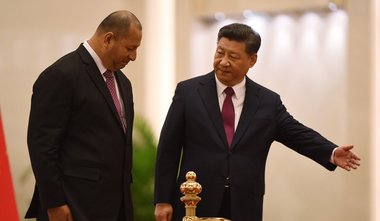
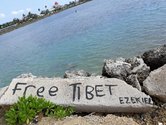
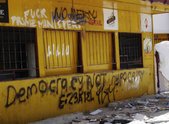



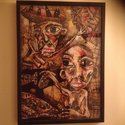

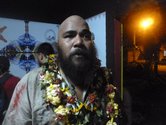
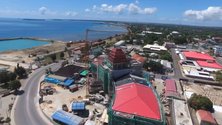
 Two Rooms presents a program of residencies and projects
Two Rooms presents a program of residencies and projects Advertising in this column
Advertising in this column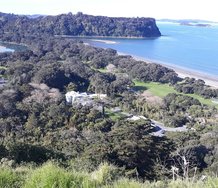
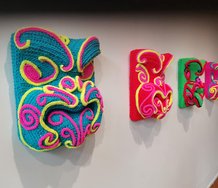

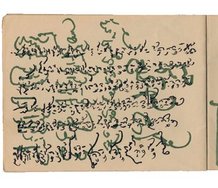
This Discussion has 0 comments.
Comment
Participate
Register to Participate.
Sign in
Sign in to an existing account.